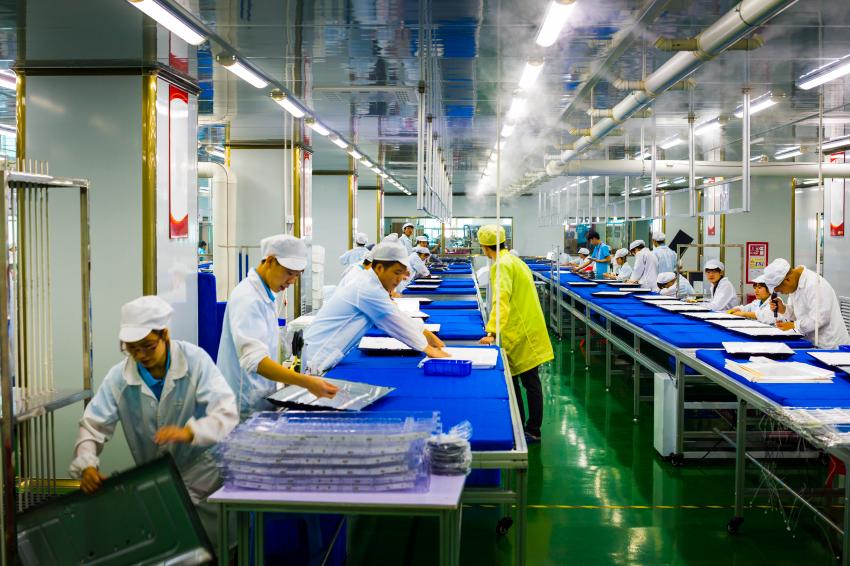Stricter Environmental Regulation in China
How Western Chemical Companies Can Deal with China’s Environmental Clean-up
Since late 2016, the Chinese government has conducted a series of environmental inspections of production companies. Compared to previous actions, these inspections are much stricter and conducted on a larger scale. They are an indication of much tighter implementation of environmental regulation at a time when the regulations themselves are also tightening. It is therefore worthwhile for companies with chemical production in China – and for those doing business with them – to examine their direct and indirect consequences, e.g. production stops, relocation of plants to industrial parks, increase of production costs, and industry consolidation.
In detail, we interviewed professionals ranging from CEOs to heads of R&D and process development about:
- How does the stricter environmental regulation in China affect you or CMOs/CDMOs in general, e.g. does it create a necessity for shifting production to other countries?
- Which measures could companies with a stake in Chinese chemical production consider reducing a supply risk?
- How could foreign players in China benefit from this development?
China’s Competitive Advantage Could Decrease

Hendrik Baumann (Arevipharma):
The China Safety Production law has been published first time in 2002 with amendments in 2009 and 2014. This law is the basis for all activities of the Chinese production industry, including the chemical and pharmaceutical industries. During the above-mentioned time period this law was spontaneously enforced, sometimes the local authorities made inspections of relevant production facilities and in some cases, they closed factories which were absolutely not acceptable or after an accident happened. Overall there was not a systematic law enforcement and therefore most of the chemical producers have ignored the law and its consequences. Probably the ignition for the change of the governments enforcement policy of the safety production law was the accident of August 2015 in Tianjin, were a series of explosions killed 173 people and injured hundreds of others at a container storage station.
Since 2015 we see a much stricter law enforcement, many closings of chemical manufacturing sites all over the country. We know from business partners that the local authorities perform onsite environmental audits on a more frequent basis, especially they check product lists against the production licenses, the waste and off-gas treatment systems (if available) or they require to install such systems. As a result, many companies have been closed and their products disappeared from the market without notice. Raw materials are no longer available, the number of producers have been reduced and prices increased subsequently.
For us as a chemical and pharmaceutical producer it is of importance having reliable suppliers, ideally from different countries, for each single raw material. Alternatively, we consider a restart of in-house production of critical raw materials. This sounds easier than it is, because the production know-how has been given up and must be re-accumulated, which means some of the processes must be developed and validated again.
Under the assumption that the European Union will not further tighten the current production and environmental laws, we see a high probability to get back market share and production from China. Pricewise and with regard to the production costs it is clear that the competitive advantage of China, with respect to overall production costs, will decrease within the next 5-10 years. We are convinced that European companies will then have a real “level playing” field with China and will be competitive. Consequently, it will also be possible in the future to export intermediates and API’s to China.
Environmental Protection Is Not for Free

Lukas von Hippel (Pharma Waldhof):
From my understanding, we see an evolutionary process on global scale. As a part of the globalization, we have seen in the late 90s of last century a trend moving supply chains east, mainly for cost reasons. Thus, quite some western companies suffered, some have not been able to change as quickly as necessary. Consequently, technologies disappeared in Europe to create a strong dependence from India or China. During this period, quite some colleagues tried to provide transparency on mechanism and consequences. CHEManager was one source of information discussing such effects, e.g. in the article “Zeit zum Handeln” that was published in March 2010.
While buying in Asia, a strong cash-flow to emerging markets was established, firstly creating jobs, and gaining economic wealth. Now, two decades later, environmental challenges become evident, and especially China reacts. First, in my opinion, it is a good development, since it shows there is no free lunch: Environmental protection is not for free, and the lever to global climate protection in these countries is bigger compared to other measures. As a next consequence, we see the shift of production as well to again cheaper countries, and discussion is going on which countries will be next, replacing hubs that get more expensive.
So, in general, the next step in an evolutionary process does not change the game, but effects cost structures and may force innovation. Companies who took their EHS policies in context to supply chains seriously may not be surprised by the development, and will not be affected by a development which has been known for years. However, everybody is getting additional work securing supply chain standards. Others who have not worked that diligent may face issues. So, it depends on the buying organization and the people acting how well supply chains are built up. Chance and risk may be used synonymously. Thus, it is wise to consider consequences before acting.
A Change of Global Supply Patterns

Torsten Derr (Saltigo):
All Saltigo plants are located in Germany. We have no assets in China and are not affected by the current changes there. In 2017/2018 Saltigo strengthened the German production network by an investment of €60 million to be prepared for an additional demand for molecules covering production losses from Chinese suppliers. This strategy is clearly paying off now.
Most of our customers reacted to the enforcement of environmental regulation in China by specific "China de-risking" strategies. For higher supply security some customers are willing to relocate complete supply chains or introduce a second supplier sourcing strategy, even at the cost of higher prices, if products originate from a western supply chain. As some of our customers could not cover their “contracted” raw material demand from Chinese suppliers, they are rediscovering the advantages of “made in Germany”.
Some of our raw materials are procured in China. We experienced insecure supply situations in the last 6 months from a high number of Chinese suppliers and reacted in three manners: 1) backward integration into our own assets in Germany, 2) strengthening second supplier setup and 3) re-establishing supply agreements with western suppliers, especially in Europe.
Saltigo presumes that even after lifting the production restrictions, the cost level and local prices in China will not return to the competitive level of recent years. Chemical parks in China have to provide similar environmental standards as in Europe. The resulting environmental price tag will reduce the former Chinese competitive advantage. What we observe right now has the quality to permanently change global supply patterns in the CMO industry.
Customers Expect an Uninterrupted Supply

Dimitris Kalias (VIO Chemicals):
China’s environmental clean-up has had a big impact on CDMOs and industrial competitiveness. While regulations governing environmental protection tighten up, the provincial fragmentation and lack of strong policy support present great challenges for small and medium chemical producers and their supply chain. The degree of strictness in the enforcement of the regulations can be different from province to province, depending on the management style of each chemical zone’s administration and local government. Guidelines about tax collection and monitoring of pollutants are still under discussion, bringing uncertainty to an already fragmented regulatory landscape.
Not surprisingly, small and medium-sized companies find it very difficult to keep up-to-date with the ongoing regulatory changes and meet public audit requirements. As a result, they face long years of delays to get production licenses for new products or fail to get a license whatsoever. Small companies are even sometimes forced by the local authorities to merge with their neighboring manufacturing peers, e.g. pharma intermediate producers with agrochemical companies, without any economic criteria in consideration, only because their land is too small. Others just shut down.
And it won’t stop there. There has been growing pressure for the installation of full automation systems as a process control mechanism to minimize risk. For CDMOs, automation solutions are invariably associated with IT infrastructure and purchase of software, such as ERP, PLC, DCS, etc. And although it may not be mandatory to have every system installed – it usually depends on the size of the factory and production pipelines – it is almost certain that conforming to process control standards can be very costly.
To us, it is crucial to secure an uninterrupted supply for our customers. Therefore, we at VIO Chemicals perform our own internal audits to gain a greater level of comfort prior to public control. We screen and assess our suppliers not only for environmental but also for quality, safety and regulatory compliance. Proactivity, anticipation, a strong local team and high investments in pollutants monitoring technology and process control solutions are fundamental to our competitiveness and reliability as a CDMO.









